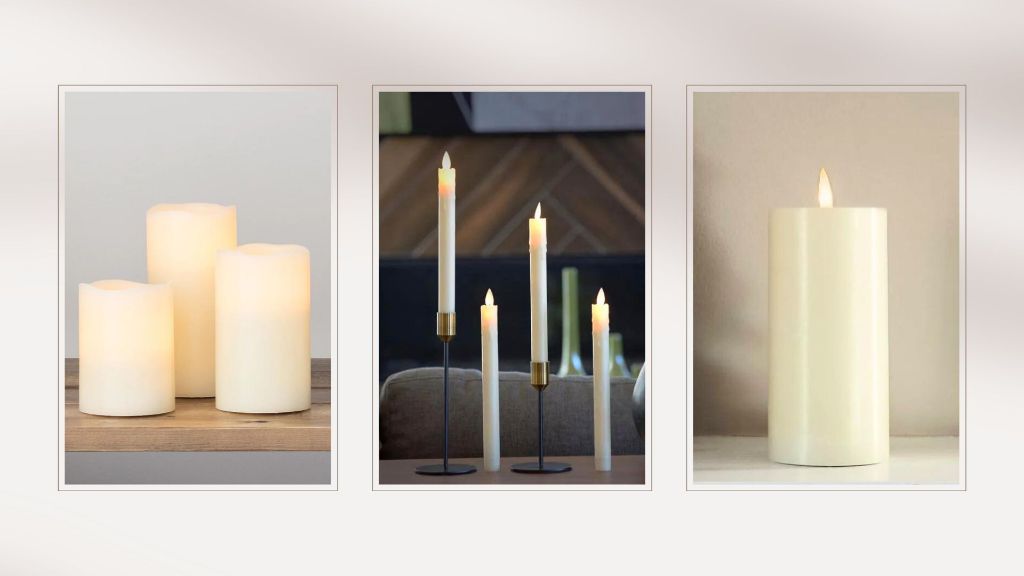Is It Ok To Burn Candles Over Night?
Is It Safe to Burn Candles Overnight?
Candles create a cozy ambiance and pleasant scent in any home. Many of us like to keep candles burning into the night, whether it’s to wind down with a book or freshen the air while we sleep. But is it safe to leave candles burning overnight unattended? There are some risks to consider.
In this article, we’ll examine the safety concerns around burning candles overnight, including statistics on house fires caused by candles. We’ll also provide tips on how to reduce risks if you do choose to burn candles overnight. Proper placement, ventilation, wick trimming, using safer candle materials, and having fire extinguishers on hand can all help make overnight candle burning less hazardous.
Safety Risks
Leaving candles burning overnight poses significant safety risks. The primary danger is the risk of fire. As noted by Jenkins Restorations, “Candles can become unstable if they’re left to burn for too long. If you leave a candle burning overnight, you may have an unexpected visit from firefighters…” (Source). Candles are an open flame and if left unattended can easily ignite nearby combustible materials like curtains, bedding, furniture, etc. This risk is especially concerning when falling asleep with candles still burning. It only takes a moment of carelessness or distraction for a fire to start and quickly spread while sleeping.
The Bed Consultant warns, “Candles pose a significant fire hazard, especially if left burning overnight. A lit candle can ignite nearby objects, such as curtains, sheets, furniture, etc…” (Source). Accidentally falling asleep with candles burning is extremely dangerous. Fires often occur at night when people are sleeping, and a candle left burning only increases this risk substantially. There have been many news reports of fatal fires started by unattended candles left burning overnight.
Reducing Risks
There are some important steps you can take to reduce the risks of leaving a candle burning overnight:
Use an appropriate candle holder made of non-flammable material like glass, metal or ceramic. Avoid holding candles in containers like mugs or bowls which can get hot and are more prone to tipping over (Jenkins Restorations, 2022). The candle holder should be sturdy and placed on a flat, hard surface.
Don’t leave burning candles unattended near flammable items like curtains, paper, furniture or bedding. Keep candles at least 12 inches away from anything that can catch fire (Jenkins Restorations, 2022). It’s safest to leave burning candles in an open area without anything combustible nearby.
Make sure to extinguish candles before going to sleep. Never leave a burning candle unattended overnight while sleeping. The safest practice is to blow out all candles before getting into bed.
Alternatives
There are several flameless alternatives to traditional candles that can provide light and fragrance without the risks of leaving a burning candle unattended overnight. Some popular options include:
Flameless candles use LED lights to mimic the look of a real candle flame. They come in many styles, like pillars, votives, and tapers. Flameless candles create ambiance without the fire hazard.
Battery-operated candles also provide flickering light without an open flame. Many allow you to set timers so they will automatically turn off after a few hours. This makes them safer for overnight use.
Simple night lights plug into outlets to provide a gentle glow throughout the night. Night lights come in fun shapes and colors to set a mood without posing burn risks.

Aromatherapy diffusers disperse essential oils to scent a room. Ultrasonic and nebulizing diffusers slowly release fragrance using water, air, and electricity without the need for a wick and flame. They can run safely for extended periods.
Proper Placement
It is critical to place candles away from anything that can easily catch fire, like drapes, bedding, and furniture. According to 8 Candle Safety Tips to Prevent House Fires, “Keep burning candles at least 12 inches away from anything that can burn”(jenkinsrestorations.com). Candles should be placed on sturdy, nonflammable surfaces that won’t be easily knocked over. The Bed Consultant recommends putting candles in nonflammable containers or on a nonflammable tray (thebedconsultant.com). It’s also important to keep candles out of reach of children and pets who may knock them over.
Proper Wick Trimming
It’s important to trim the wick to the proper size before lighting a candle. As noted by Martha Stewart, long wicks tend to produce more soot and smoke as the candle burns. The wick should be trimmed to approximately 1⁄4 inch before lighting. This helps ensure an even burn without excess smoke.
Trimming the wick to the proper length is also key for reducing risks when burning a candle overnight. Long wicks can create taller flames that are more prone to catching items above the candle on fire. They also can create more wax pooling, instability, and drips down the side of the container. Keeping the wick trimmed to 1⁄4 inch can help mitigate these risks if you plan to let a candle burn for extended periods unattended.
Proper Ventilation
When burning candles, it is important to do so in a well-ventilated room according to Are Candles Bad for the Air Quality in Your Home?. Burning candles in small, enclosed spaces without adequate airflow can lead to poor indoor air quality. The smoke and soot released from candles as they burn can build up inside an unventilated room.
To avoid this, burn candles in rooms with open windows, working ventilation fans, or air conditioning. You can also place candles near vents or air returns to allow the airflow to direct smoke and particulates outside. Avoid lighting multiple candles in tiny rooms with limited ventilation. The larger the room and better the airflow, the less impact candle burning will have on indoor air quality.
Candle Composition
The type of wax used in candles can impact safety and air quality. Paraffin wax, a byproduct of petroleum refining, is the most common candle wax due to its low cost. However, paraffin wax produces more soot than natural waxes like soy wax or beeswax (https://lonestarcandlesupply.com/soy-vs-paraffin/). The soot from paraffin candles contains carcinogens and can dirty walls and surfaces (https://www.marthastewart.com/8061950/candle-wax-type-guide). Beeswax and soy wax burn cleaner than paraffin wax. However, soy wax requires a higher melting point temperature, so may pose a greater fire hazard.
Scented candles, especially inexpensive ones, often use synthetic fragrances and wicks that release more soot. These substances can irritate lungs and trigger allergic reactions or asthma symptoms. Natural beeswax or soy candles with cotton wicks produce less soot and use safer essential oil scents. Reading labels to avoid phthalates, synthetics, and lead core wicks can reduce risks.
Fire Extinguishers
Having a fire extinguisher nearby is an important safety step when burning candles overnight or for extended periods of time (Reducing the Risk of Candle Fires, 2023). In the event that a candle fire does occur, an extinguisher allows you to quickly extinguish the flames before they can spread or cause damage. Extinguishers suitable for putting out candle fires are typically Class B or Class C models, which are designed for flammable liquids or electrical equipment fires.
It’s also crucial to know how to properly operate your extinguisher. Aim the nozzle low at the base of the fire and not directly at the flames, while standing approximately 6 feet away (How to Put Out Candle Fire Safely, 2023). Squeeze the handles slowly and evenly to discharge the extinguishing agent. Sweep from side to side, moving closer once the fire starts to diminish. This helps avoid spreading or splashing the flames. Always read the instructions and educate everyone in your household on safe extinguisher use.
Conclusion
In summary, leaving candles burning overnight does come with risks. There is always a danger of fire when leaving an open flame unattended for long periods of time. Precautions can be taken to reduce risks, like keeping candles away from flammable objects, properly trimming wicks, ensuring ventilation, choosing safer candle compositions, and having fire extinguishers on hand. However, the safest option is still not leaving candles burning when unattended or while sleeping.
Given the inherent risks, it is generally not recommended to burn candles overnight. The risks likely outweigh any benefits. It is safer to blow out candles before going to sleep or leaving them unattended for extended periods. There are also alternatives like flameless candles that provide ambiance without open flames. While the right precautions can reduce risks, they cannot eliminate them entirely. When considering safety, it is best not to burn candles overnight.


